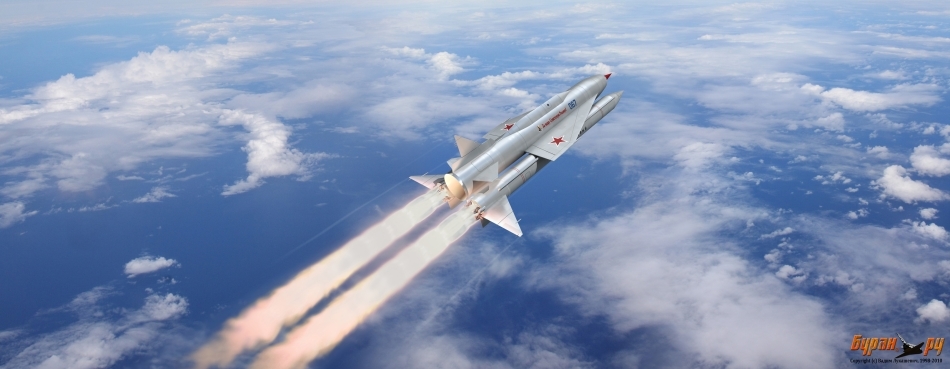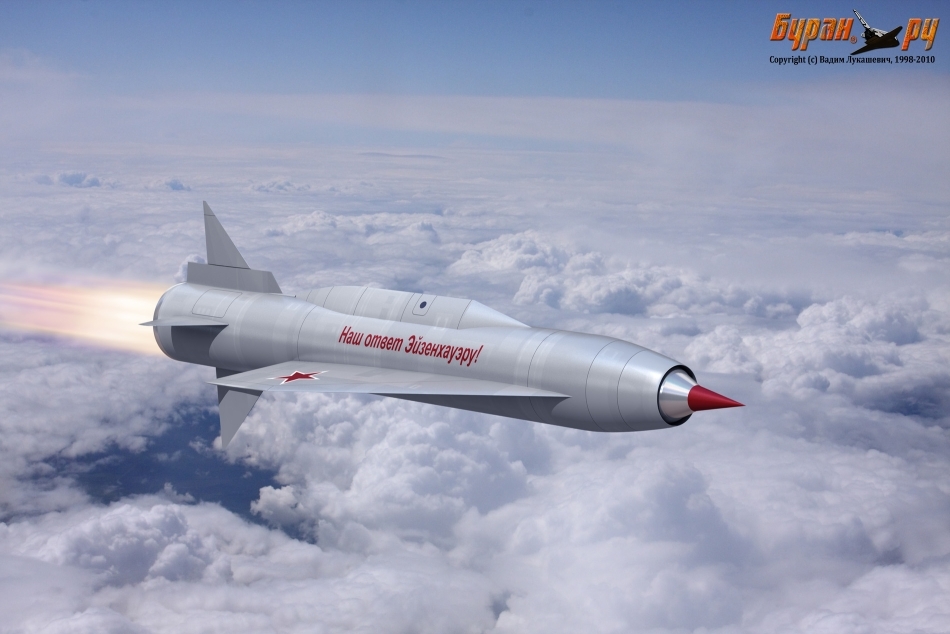Missiles who lost

Sometimes it turns out that a logical and correct decision stops the development of technologies that would be very relevant to the place in thirty years. Intercontinental ballistic missiles, flying at a speed of 22 Mach, turned out to be simpler than intercontinental cruise missiles, which flew towards the target at a speed of 3 Mach. The Soviet "Storm" and "Buran", the American Snark and Navaho lost to the R-7 and Atlas. But who knows, maybe now the cosmos would be closer if they were developed further?
Historically, Americans were the first to develop intercontinental cruise missiles, so let's start with them.
SM-62 Snark
The Americans were impressed by the success of the German V-1 cruise missile and, after the end of the war, they wanted the same for themselves, only better. In 1946, the United States Air Force signed a contract with Northrop for the development of two long-range cruise missiles - the Snark MX-775A subsonic and the Bujuma supersonic MX-775B. Snark and Bujum are fictional creatures from the poem of Lewis Carroll, and if the Snark in the text was just dangerous, then meeting with Bujum was deadly to man. Obviously, then the military and engineers had a great sense of humor ...
The program has never enjoyed a lot of congressional support in the form of generous funding, so the first trials began only in 1951. But by this time, the US Air Force, instead of a range of 2500 km, wanted an intercontinental range of 10,000 km. The construction of the Snark had to be redone, and the Bujum was considered too ambitious and closed.
')

Sketch "Bujum". Financial restrictions and policies have proved fatal, even for a terrible fictional creature.
"Snark" as a result received a swift, beautiful view with sloping wings and Northrop's unorthodox nature:

The rocket had no horizontal tail, and in flight it was controlled by pitch by elevons, flying with a noticeable positive pitch (nose up).
The project was going hard. Numerous accidents during test launches from Cape Canaveral resulted in a multitude of fallen and drowned rockets lying around him on the seabed, and the wits, who were devoted to the project’s secrets, joked about the Snark, the new predator of the waters of Florida. The replacement of the J71 engine on the J57 helped a bit. But when in 1955 they began to test the navigation system, the problems began in a new way, already with it. The inertial system with a flight duration of ten hours gave an error of 30 km, which was no good even for atomic weapons. I had to supplement it with a navigation system for the stars. The combined astroinertial system improved accuracy to 2.4 km. In one test, the rocket flew to the Ascension Islands with an error of 7.4 km, but during the investigation it turned out that the islands themselves were not located on the map accurately enough, and the error was actually less. At the same time, the reliability left much to be desired - another rocket flew to Brazil, where it was found in the jungle 30 years later.
An interesting feature of the rocket was that in test flights it could return to the base after a ten-hour flight, and be reused. In such flights, a ski landing gear and a brake parachute were put on the rocket. And the airfield of Cape Canaveral was given the unofficial name of the Skid Strip (loosely translated as “trails”).
In the case of combat use, the march part with the engine and wings had to be effectively dumped:

A warhead - to fall into a target. The warhead was the W39 thermonuclear charge with the TNT equivalent of 3.8 megatons.
The Snark was the only rocket of this entire publication, which was deployed for combat use. In 1959, the first missile arrived at Presque Isle in Maine, and on March 18, 1960, the missiles took up combat duty. In total, the base was combat-ready up to 30 missiles. But by 1960, the Snark was hopelessly behind the ballistic missiles. The ICBM reached the USSR in twenty minutes and was invulnerable to air defense, and the subsonic Snark was easily detected, intercepted and destroyed. Already in the spring of 1961, President Kennedy declared the missile "obsolete and without military value", and the Snark was removed from service. Now it can be seen in several American museums.

SM-64 Navaho
The development of the Navaho project was also begun in 1946. As in the case of the Snark, the original project was simpler and less - under the Nativ code it was planned to create a system with a rocket launch and a planned flight based on V-2 technologies and a range of 1600 km:

Photos from the test Nativ. The proportions of the V-2 are quite recognizable.
But over time, the requirements began to change. The US military received a sufficient number of short-range missiles, and they wanted an increasingly long-range missile. By the early 1950s, requirements included a range of 10,000 km and a speed of 3 Mach. The design had to be changed:

As a result, instead of the “rocket acceleration and planning” concept, we had to put a marching ramjet engine, and in order for it to be able to start, we could accelerate it with a separate rocket stage. For the tests they made a version reduced by a third with the index Navaho G-26.

In November 1956, the first tests took place. The rocket exploded after 26 seconds. The following ten trials also ended in failure. Only for the twelfth time, on March 22, 1957, the rocket could fly for almost five minutes.

The next launch is again an explosion at the start. June 26 - a comparative success, another 4.5 minutes of flight. And on July 13, 1957 the project was suddenly closed. The trials of the full-sized version did not even have time to begin. The reason for the closure was obvious - the ballistic missiles Jupiter, Thor and Atlas began testing in the spring of 1957. They also exploded at the start, but Thor managed to fly 2,100 km in May, and the advantages of ballistic missiles were obvious. North American, in compensation for the canceled contract, received an order to develop the Hound Dog airborne cruise missile. And there is some irony of fate that the engineers who made the Navaho later participated in the development of the Apollo ships and, later, the Space Shuttle.
However, despite the closure of the project, test flights of already manufactured missiles continued until spring 1958. The guidance system was considered promising for possible use on other missiles. In February 1958, one rocket managed to fly more than 2000 km. Alas, this did not lead to the resumption of the program. Navaho was waiting for the same end - the museum.

Still, an unusually ugly design turned out ...
the USSR
In the USSR, work on intercontinental missiles began later, but they were more intensive. The decision to create unmanned means of delivering a nuclear charge to an intercontinental range of at least 8,000 km was taken by the USSR Council of Ministers in 1954. At the same time, two directions were launched - ballistic and cruise missiles. And if the famous “seven” grew out of ballistic missiles, then there were two cruise missiles — the La-350 “Storm” of the Lavochkin Design Bureau and the M-40 “Buran” of the Myasishchev Design Bureau.
La-350 "The Tempest"
The outline design of the Storm was completed in August 1954. The rocket had to start vertically on two first-stage accelerators, rise to an altitude of 17 km and accelerate to a speed of 3M. Accelerators were dropped there and a sustained-flow propulsion jet engine (ramjet) was activated. On it, the second stage was to fly at an altitude of 17-18 km, on the approach to the goal to gain 25 km for anti-aircraft maneuver and swoop on the target. The mass of the rocket was 95 tons, and the guidance system with navigation through the stars was supposed to provide accuracy up to 10 km.

Three projections

Rocket in the assembly and test complex
Trials began in July 1957. In the first flight, because of the abnormal operation of the relay, the gas rudders were immediately dropped at the first stage, the rocket lost control, tumbled and fell not far from the launch. Only from the fifth time, in the spring of 1958, it was possible to conduct a successful launch. The tests went well, the rocket flew farther and farther, but trouble came, from where it was not expected. Marching ramjet, which could be checked only in flight, was less effective than it was estimated. The engine consumed more fuel, produced a lower specific impulse, and instead of the estimated range of 8500 km, it was possible to get a maximum of 6500. In addition, it was already in the yard in 1960, the R-7 ballistic missile, which began testing in the spring of 1957, was already adopted on arms, were working on the creation of an ICBM R-16. The "Storm" was closed, proposals to create a photo reconnaissance or target missile at its base were rejected, now only the test footage reminds of it:
And the renders of the site "Buran.ru"

It looked like the second stage in flight
M-40 "Buran"
About "Buran" is known the least. It was supposed to be almost twice as heavy due to the use of a heavier warhead, it was structurally similar to the “Storm”, used the same bundle of “ramjet + boosters on the LRE,” there were only four boosters. According to calculations, the “Buran” range should have exceeded 9000 km.


It is known that in 1957 one rocket was built, which reached the bench test stage. The project "Buran" was closed already in 1958.

About the benefits of the forgotten
On both sides of the ocean, the decision to close projects of intercontinental cruise missiles was logical, justified and true. However, together with cruise missiles, the technologies for creating high thrust supersonic ramjet propulsion systems were lost. If the “Storm” had been preserved, for example, as a photo reconnaissance, then the developments on its engine could be used in the “Spiral” project. Yes, according to the plan “Spirals”, a hypersonic-plane racer was needed, at a speed of up to 6 M, but due to the obvious technical complexity of its creation, the project could try to use the Bure / Buran developments to create a simplified first-stage carrier. In addition, let's not forget that if the project had been preserved and further research would have been financed by it, there would be chances of raising the power, specific impulse and maximum operating speed of the engine. A bundle of “mini-shuttle + LRE + ramjet + ramp” in the presence of high thrust ramjet mastered ramjet could easily check the scalability of reusable systems and, who knows, maybe ease our access to space?
Publications about military space on the tag "military space" . All those concerned - with Defender of the Fatherland Day!
Publications about options and ideas to facilitate access to space by the same tag .
A small announcement for the residents of Ufa : My lecture "Cold Treasures of the Far Extra-Land" will be held in the Ufa Planetarium on February 26 at 19:00. For residents of other cities, I try to record lectures and upload videos .
Source: https://habr.com/ru/post/371831/
All Articles